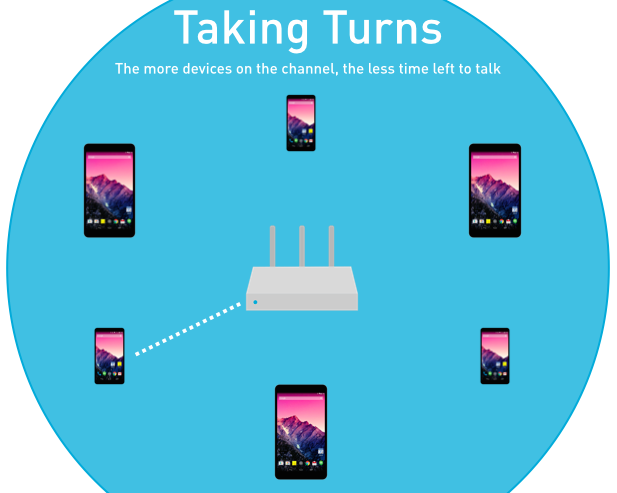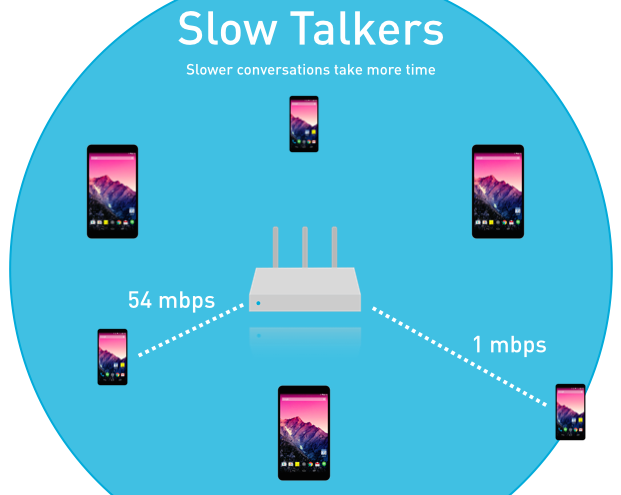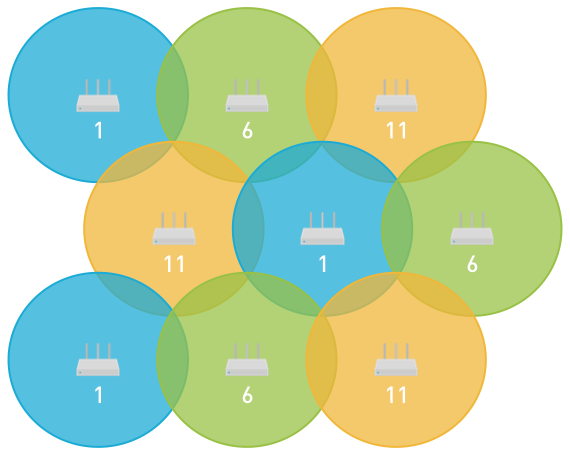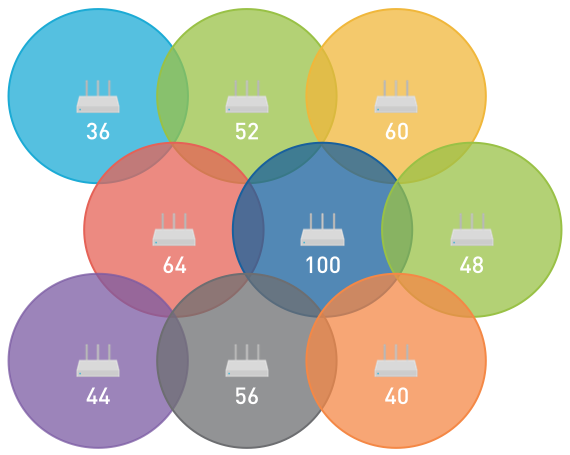Designing a Dual-Band Wireless Network
![]()
Metageek has published a blog with useful tips to design an wireless network. Metageek is a leading developer of digital Wi-Fi tools. Needs for wireless networks are growing. Previously, we were able to design wireless networks to simply provide coverage for the desired coverage area. Now, with the demands being places on our networks, we need to design for network capacity, not just coverage.
By correctly utilizing bot the 2.4 and 5 GHz bands, we can:
- Double the potential available wireless bandwidth
- 802.11b/g/n compatibility for older 2.4 GHz devices
- Better performance for newer 802.11a/n/ac compatible devices
2.4 and 5 GHz Comparison
| 2.4 GHz | 5 GHz |
| 802.11b/g/n | 802.11a/n/ac |
| Greater Range (~300 ft) | Lower Indoor Range (~90 ft) |
| Universal Compatibility | Limited Compatibility (a/n/ac devices only) |
| 3 non-overlapping channels | 24 non-overlapping channels |
| Congested with Wi-Fi | Little Wi-Fi congestion |
| Plagued by non-Wi-Fi interference | Very little non-Wi-Fi interference |
2.4 GHz has three non-overlapping channels to work with, while 5 GHz has twenty-four. We don’t always get to use all of the 5 GHz channels, but overall it has a lot more space.

Channel Capacity
Many of us are familiar with an ethernet cable, which has multiple twisted pairs of copper wires in one cable. This allows for bi-directional or full-duplex communication. Network devices on either end of the cable can talk at the same time, which like a two-lane highway.
Only One Device at a Time
Wi-Fi is half-duplex, which means that on any channel, only one device can talk at a time. If two devices try to talk at the same time, they would interrupt each other. Wi-Fi is more like a one-lane highway, traffic can only flow in one direction at a time.

Since Wi-Fi is half duplex, only one Wi-Fi device can transmit on a channel at a time. The more Wi-Fi devices we add to a channel, the smaller and smaller everyone’s transmit opportunities get. This is known as co-channel interference.
Since only one device can talk on a channel at a time, we need to limit the amount of devices on each channel, so it isn’t too crowded, with the goal of reducing co-channel interference.

Devices transmit data at different data rates depending on how new they are (N devices can talk faster than B devices, for example), how close they are to the access point, and how noisy the RF environment is.
Slow devices take longer the transmit the same amount of data. We need to keep our data rates fast to force clients to talk faster and save time, which also reduces co-channel interference.

We can reduce co-channel interference by:
- Disabling slower data rates like 1, 2, 5.5, or 11 mbps
- Creating smaller coverage cells, so less devices have to share the channel
- Creating effective coverage cells where devices are able to always talk quickly
- Offering both 2.4 and 5 GHz support, effectively doubling potential available throughput
- Performing effective channel planning, to keep cells from having to take turns
Channel Planning
2.4 GHz
To eliminate adjacent-channel (overlapping) interference, we only use channels 1, 6, and 11 (1, 5, 9, and 13 in some parts of the world).
To minimize co-channel interference, same-channel access points will be placed as far away from each other as possible. This divides the coverage area into smaller cells. Each small cell has only a few clients, and same-channel cells won’t have to take turns with other cells.
 Same-channel cells are as far away from each other as possible.
Same-channel cells are as far away from each other as possible.
5 GHz
In the 5 GHz band, no 20 MHz channels partially overlap. In addition to this, there are 24 non-overlapping channels to work with, so making sure that no same-channel cells touch is much easier.
 With 24 non-overlapping channels to choose from, it is much easier to keep same-channel cells touching.
With 24 non-overlapping channels to choose from, it is much easier to keep same-channel cells touching.
Dual-Band Wireless Networks Design Checklist
| Action | Result |
| Dual-band AP’s deployed |
|
| All 2.4 GHz radios on 1, 6, and 11 | Adjacent-channel interference eliminated |
| 2.4 GHz channels planned | Co-channel interference minimized |
| 5 GHz channels planned | Co-channel interference minimized |
| 2.4 GHz power turned down to match 5 GHz coverage area | Even 2.4 and 5 GHz coverage |